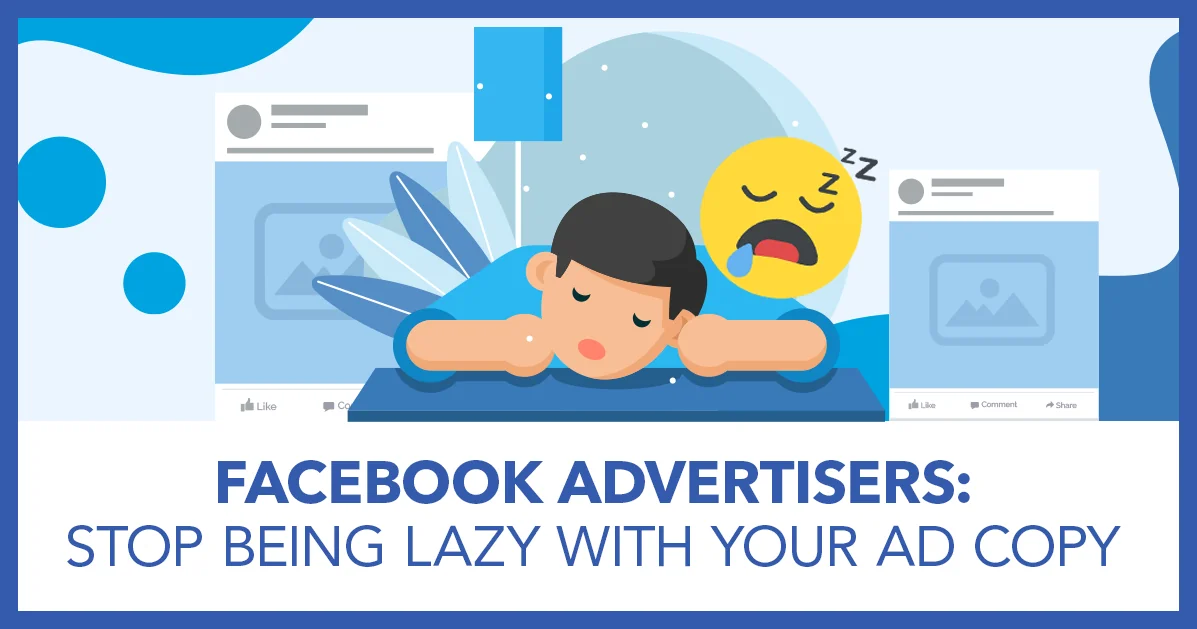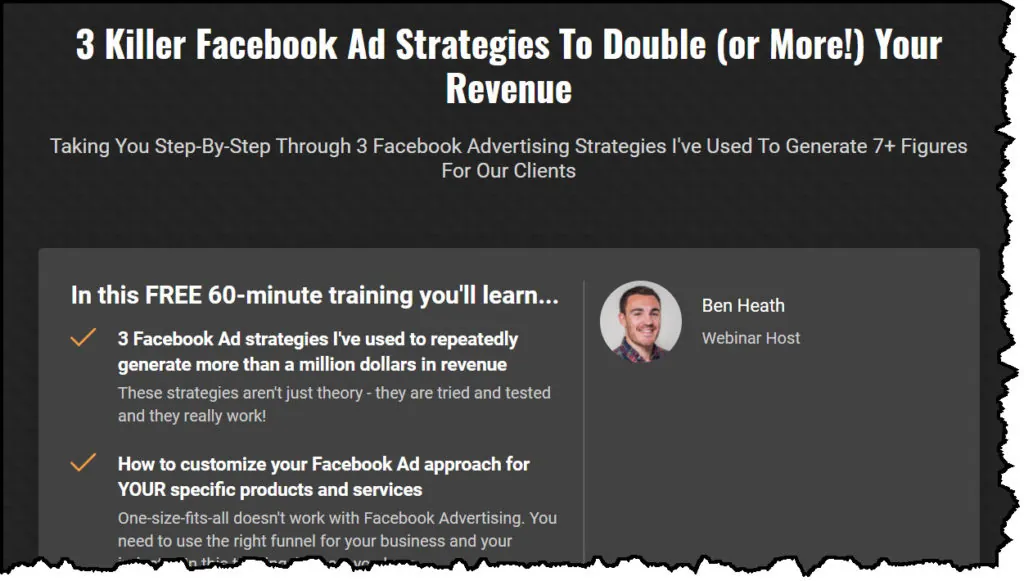
Facebook Advertisers: Stop Being Lazy With Your Ad Copy
Let’s be honest: Some Facebook advertisers have gotten a bit lazy with their copy lately. And that’s a big mistake that could be costing you results. In fact, you might be missing out on tons of leads and sales because of this simple mistake.
It’s not hard to see why some people are taking short cuts. Meta makes it super easy. You pop in a single line of text, tick a few boxes, and let Advantage+ Creative do its thing. Suddenly, you’ve got five new versions of your primary text and headlines. Job done, right?
Not exactly.
While AI can help streamline ad creation (and we use AI every day at my agency), relying on it too heavily—or blindly—is a mistake. The truth is, if you’re letting Meta write your ad copy for you without any real oversight, you’re likely missing out on serious performance gains.
Here’s why that’s a problem—and what to do instead.
The Lazy Trap: One Line, Then Auto-Fill
Here’s what too many advertisers are doing:
- Write one quick line of primary text
- Scroll down
- Click “apply all variations”
- Publish the ad with zero review of Meta’s suggestions
It’s tempting to think, “Meta knows best. The AI has the data.” And while yes, AI has access to a lot of performance information, it doesn’t have your strategy, your brand voice, or the nuances of your offer.
That’s where things start to fall apart – and cost you revenue.
Case Study: A Done-for-You Ad Service

Take a campaign for a done-for-you Facebook ad service as an example. The original copy looked like this:
“Want the best possible ad results without having to do all the work? My specialist agency can create, manage, and optimize your ad campaigns for you. We have a track record of delivering outstanding results for our clients. To find out more, you can book a free call with us.”
Now compare that to one of Meta’s generated alternatives:
“Enhance the efficiency and success of your advertising campaigns with our expert agency….”
Not terrible—but not great. It’s generic, lacks personality, and doesn’t reflect the tone or positioning of the original. Another option suggested by the AI read more like it was written for a coaching offer, not a done-for-you service.
That’s a problem. AI doesn’t always get the context right. It’s trained on general data, not your funnel, not your voice, and not your goals.

Use AI—But Be the Editor
Let’s be clear: there’s nothing wrong with using Meta’s AI or other tools like ChatGPT. In fact, they can save you loads of time. But they work best when you:
- Use them to brainstorm—not replace—copy
- Edit heavily to fit your positioning
- Check the tone, relevance, and fit with your creative
- Add your unique proof points, testimonials, or personal voice
Think of AI as a junior copywriter—it can draft, but it still needs your oversight.
When AI Gets It Right (And When It Doesn’t)
Here’s an example. For our done for you service, Meta gave use the option of:
“Want to take your ads to the next level? Say goodbye to manual effort and hello to outstanding results”
Can you tell if this ad copy is for a done for you service or a coaching offer? I can’t.
What the offer is isn’t clear from this primary text and that’s a real problem. Because when you offer isn’t clear your customer won’t know what problem your solution solves, and when they don’t know that they are far less likely to buy.

And I want to point out to you here, that this ad account has robust primary text inputs that are already being used for successful ads as well as lots of data, and this suggestion – while not terrible, still needs to be refined quite a bit.
Remember, if you have a brand new ad account the AI is much more likely to give you even worse results. So make sure you review everything before it’s posted.
In some cases, AI-generated text can hit the mark without a lot of adjustment. For example, in a mentorship program campaign, Meta’s suggestions were surprisingly solid:
“Tired of wasting money on Facebook ads that don’t deliver? We’ll mentor you daily to explode your revenue. Limited spots available. Apply now and transform your ad game.”
This kind of copy worked well for a warm audience—people who already knew the brand and the voice. And in this case AI gave us several very good options to select and we used several of them as is in the exact way the AI gave them to us.

But even then, AI fell short in the headline section. The best-performing headline for that same ad?
“Want me to mentor you?”
Simple. Personal. Direct. And highly effective—because the audience was already familiar with the person behind the ad. And this is one that we wrote ourselves. It kept the audience in mind and that is important.

But even thought the AI suggested good primary text, it didn’t suggest good headlines. Why? Because it doesn’t know your audience’s relationship with you. Instead, it served up vague options like:
- “Unlock revenue growth with ADMS 365”
- “Unlock your business potential”
Not great. And certainly not tailored.

The headline that worked well “Want me to mentor you?” is tailored specifically to my business and to a warm audience.
Facebook’s AI won’t offer a headline like this because it doesn’t know your business and it’s trained to be broad. So you need to bring marketing principles to the table when you are using AI and decide what is worth keeping and what isn’t.
Another Awesome Free Facebook Training Resource
There is nothing I like better than to see business owners increase their ROI with Facebook Ads. In order to help business owners succeed with Facebook ads I’ve created a FREE webinar training that you can register for here.

When you attend this webinar you’ll learn:
3 different Facebook ad strategies that we use every day. These strategies have generated millions of dollars in revenue and are tried and proven to work.
How to customize the Facebook ads strategy to your particular business. There is no such thing as a one size fits all approach to Facebook ads.
How Facebook and Instagram have changed and how to adjust your ad strategy to what works in 2024
Specificity Beats Generic Every Time
Another ad promoting a Facebook Ads Mastery program showed a different issue. This ad targeted agency owners and freelancers offering Facebook ads as a service.
The copy had to highlight:
- What the offer was (a course and community)
- Who it was for (service providers)
- Why it mattered (better client results → business growth)
- And proof that it works (testimonials, numbers, social proof)
The manual copy delivered all of that, using stats and real quotes from users.

Meta’s AI version? One large text block with inflated numbers and no formatting. Worse, it lacked the credibility and clarity that testimonials provide—something AI can’t fabricate.

Testimonials, Formatting, and Trust
Here’s the part where human-written copy really shines:
- Testimonials: Quotes build trust and credibility—especially in high-skepticism markets
- Formatting: Breaks in text make content easier to read and digest
- Tone and nuance: You know when to be casual, when to be bold, and when to be technical
These details make a big difference in performance. AI copy, even when decent, often misses them. So make sure that you are taking what AI gives you and using the best principles of marketing and knowledge of YOUR business to create ads that connect with your prospects.
Why This Matters
You can pour hours into your creative—shooting, editing, perfecting the visuals. But if you phone in your ad copy, it weakens the whole campaign.
Every part of the ad plays a role. And while Meta’s AI can speed things up, it’s your responsibility to guide the message.
So before you hit publish:
- Read every auto-generated option
- Reject what doesn’t fit
- Rewrite what needs work
- And always ask: is this what I would actually say to my ideal customer?
That little bit of extra effort can pay off in a big way.



